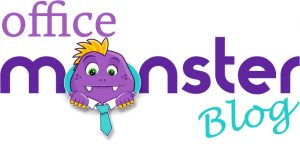In the past, nodding off at your desk was considered very embarrassing and could result in instant dismissal. But in today’s highly stressed, sleep-deprived, caffeine-dependent society, the ability to take a guilt-free nap is often welcomed and encouraged. Even better, it can have significant positive effects on a company’s bottom line.
But what are the perks? And what’s the most efficient way to get a short burst of shut-eye? We consider the many benefits and the science behind power napping at work.
First and foremost what even is a power nap?
Believe it or not, many people don’t know the answer to this question. A power nap consists of 10 to 20 minutes sleep, no longer or you’ll wake up groggy and no less because you won’t feel the benefits. A power nap should not be taken any later than 4pm, because then it will disrupt the sleeping pattern.
What science has to say
A short nap has been proven to help reverse the damage of sleep deprivation and regulate the hormonal impact of a bad night’s sleep.
A huge quantity of scientific evidence supports napping as a useful tool to increase employee performance. Study after study suggests that a quick cat nap (even 10 minutes helps) can boost brain activity, enhance concentration, support creativity and even reduce the risk of disease.
The how and where
If your office doesn’t have a designated nap area, then you’re going to have to be creative. Make sure to find a room that’s quiet, safe, and where you won’t be disturbed. Finding a space that is private will help you to relax and dose off easier.
To get comfortable, perhaps bringing a pillow or small blanket with you. Napping is all about efficiency, so to increase your chances of falling asleep and to try to get the most out of your chosen nap time, it’s important you can get comfortable quickly.
A good time to have a nap is in the afternoon, at lunchtime. Your lunch hour is an ideal time to settle down for a snooze, particularly if you’ve just eaten, as it will induce drowsiness as your food digests. Be sure to set your alarm so you don’t end up oversleeping – you don’t want to wake up hours later to find the everyone has gone home and the office is locked!
More sleep, more productivity
According to the National Sleep Foundation, almost a third of employees report falling asleep or becoming very sleepy at work. When that urge comes in the middle of the work day, if you try to ignore it, it can cause problems, your productivity levels can decrease, and this can affect the quality and quantity of your work. Therefore, if you start to feel sleepy, try not to ignore it.
Encouraging on-the-job napping
Try to encourage employees to take a 15 to 25 minute power nap to re-energize themselves. When employees don’t get proper sleep, their productivity can suffer severly.
How to make it work
20- to 30-minute naps to boost short-term alertness. Employers that allow their employees to nap should set up designated nap rooms or areas, putting together a quiet area where employees can close their eyes for up to 30 minutes can encourage them to use it.
Obviously, not all positions in a company are conducive to stepping away to take a nap. For those employees, it’s still important to take regular breaks. Encouraging those employees to stand up and stretch or take a short walk can help them re-energize.















